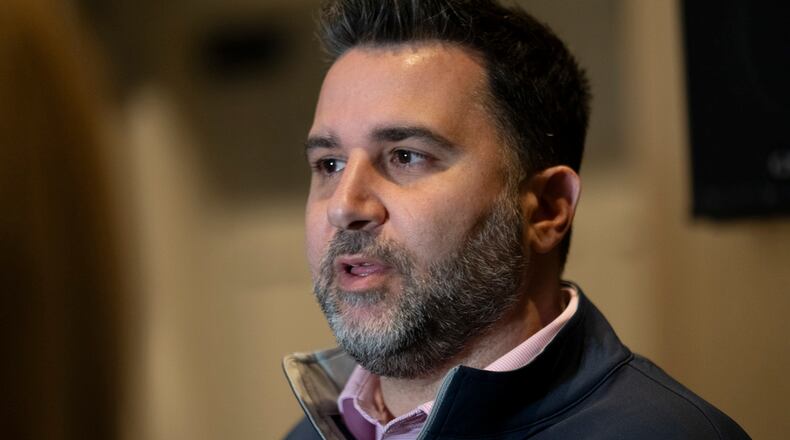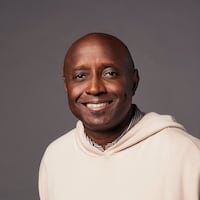In November, Braves general manager Alex Anthopoulos said the player payroll to begin 2024 would be higher than it was to end 2023. His bosses are making good on that pledge so far. The Braves payroll was $206 million in 2023, according to Spotrac. The projection for 2024 is about $225 million.
The Braves had MLB’s 10th-highest payroll in 2023. They could move up the rankings in 2024. What’s not clear is if the spending has significantly improved the roster for 2024.
That’s not necessarily a bad thing. The Braves won 104 games last season while finishing 14 games clear of the Phillies in the National League East. I value division titles because it’s much harder to win over the long haul than in a short October series. I understand why Braves supporters may feel differently considering the franchise’s history and how the past two seasons ended.
The Braves lost to the Phillies (again) in their 2023 Division Series. Anthopoulos said he wouldn’t base offseason decisions on the four-game sample, but he also wouldn’t ignore it. That series made it apparent that the Braves need more pitching. The season made it clear they needed an upgrade in left field.
The moves made to address those needs have been ho-hum.
The Braves signed free-agent pitcher Reynaldo Lopez, who may or may not fill their need for a quality starter. A dizzying series of trades and re-trades left the Braves with Jarred Kelenic, who may or may not be an upgrade over Eddie Rosario in left. New utility infielder David Fletcher is a similar player to old utility infielder Nicky Lopez, who was sent away as part of the deal to acquire lefty reliever Aaron Bummer.
The Braves are spending more on raises for their core players. Expenditures for outside help have been limited. A decent chunk of the 2024 payroll is for players that Anthopoulos paid other teams to take so that he could acquire Kelenic from the Mariners.
Opening day is more than three months away. Anthopoulos has been known to make an unexpected move or two. But history and circumstances both suggest the Braves won’t spend for one of the top free-agent pitchers still on the market. Anthopoulos said he’s unlikely to trade any of the many Braves players who signed long-term extensions, in which case he doesn’t have much to offer for a blockbuster deal.
Adding significantly more money to the payroll seems unlikely because it would mean luxury taxes on top of the salaries. All those raises for contract extensions are starting to add up.
Per Roster Resources, the Braves had a 2023 luxury-tax payroll that was about $13 million above the threshold (the tax payroll that includes things like benefits and payments to players no longer on the roster). The Braves are projected to have a 2024 tax payroll that’s $9 million above the second threshold. They would be subject to an additional penalties for payroll above that amount and for surpassing the tax threshold two years in a row.
The 2024 Braves will look much like the 2023 Braves unless the team unexpectedly splurges on an expensive free agent or trade target. That likely will come as a disappointment to supporters who got excited when Anthopoulos started clearing room on the 40-man roster. They anticipated a big deal, if not for two-way superstar Shohei Ohtani then for some other headliner.
Instead, the Braves so far have signed Lopez and made some relatively minor trades. But it’s not as if they needed a major overhaul. Better starting pitching is the top priority. Remember, though, that right-hander Charlie Morton (finger) wasn’t available for the NLDS, and Max Fried (blister) had just come off the injured list. Both pitchers will return in 2024.
Anthopoulos said the Braves were looking to acquire a starting pitcher at last week’s winter meetings. He left Nashville without a deal. The top remaining free-agent pitchers aren’t in his price range. (The Braves reportedly made a run at Aaron Nola before he re-signed with the Phillies for $172 million, so I guess anything is possible.)
Lopez is one option for the rotation. He hasn’t been a regular starter since the 2020 season. Lopez at least will make the bullpen deeper in power arms. The Braves already re-signed two hard throwers (Joe Jiménez and Pierce Johnson) and will bring back another (A.J. Minter) via arbitration. The bullpen can get the Braves through the long season, and they’ll have plenty of the swing-and-miss relievers who are essential for the postseason.
The Braves aren’t in the habit of spending big money for free agents. Anthopoulos famously said in 2018 that he could “shop in any aisle” for players. Since then, the Braves mostly have shopped the clearance rack for low-risk, high-reward deals.
Marcell Ozuna is the only free agent to get a long-term deal worth more than $15 million per year. Soon after the Braves traded for Matt Olson in 2022, they signed him to an eight-year contract worth $21 million per year. That’s about the same average for Austin Riley’s extension. It seems that’s the salary limit for Braves (Nola’s deal is worth $25 million per year).
The Braves have proved that they don’t need to spend big on free agents to win big. One major reason why that’s possible is reigning NL MVP Ronald Acuna Jr. signed an extension that’s well below his market value. The Braves signed Ozzie Albies on the cheap, too. Even with those bargain-basement contracts on the books, the extensions for Riley, Strider, Olson and others have pushed the payroll above the tax threshold.
That’s why the Braves are spending more in 2024 but won’t necessarily have a better roster. They’ll still be favored to win the East for the seventh consecutive season. Another good starting pitcher would increase the odds that they’ll stick around longer in October.
About the Author
The Latest
Featured


